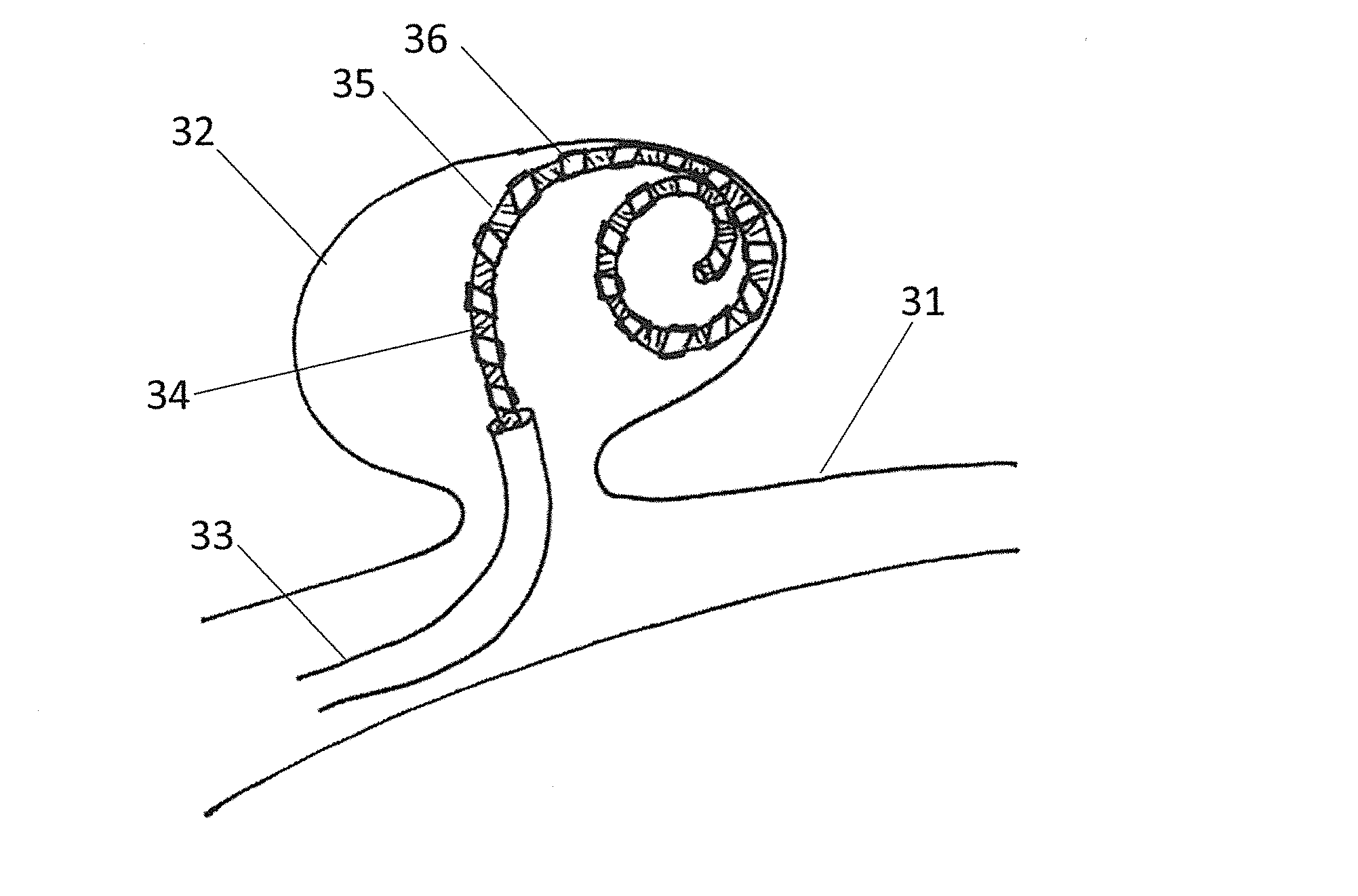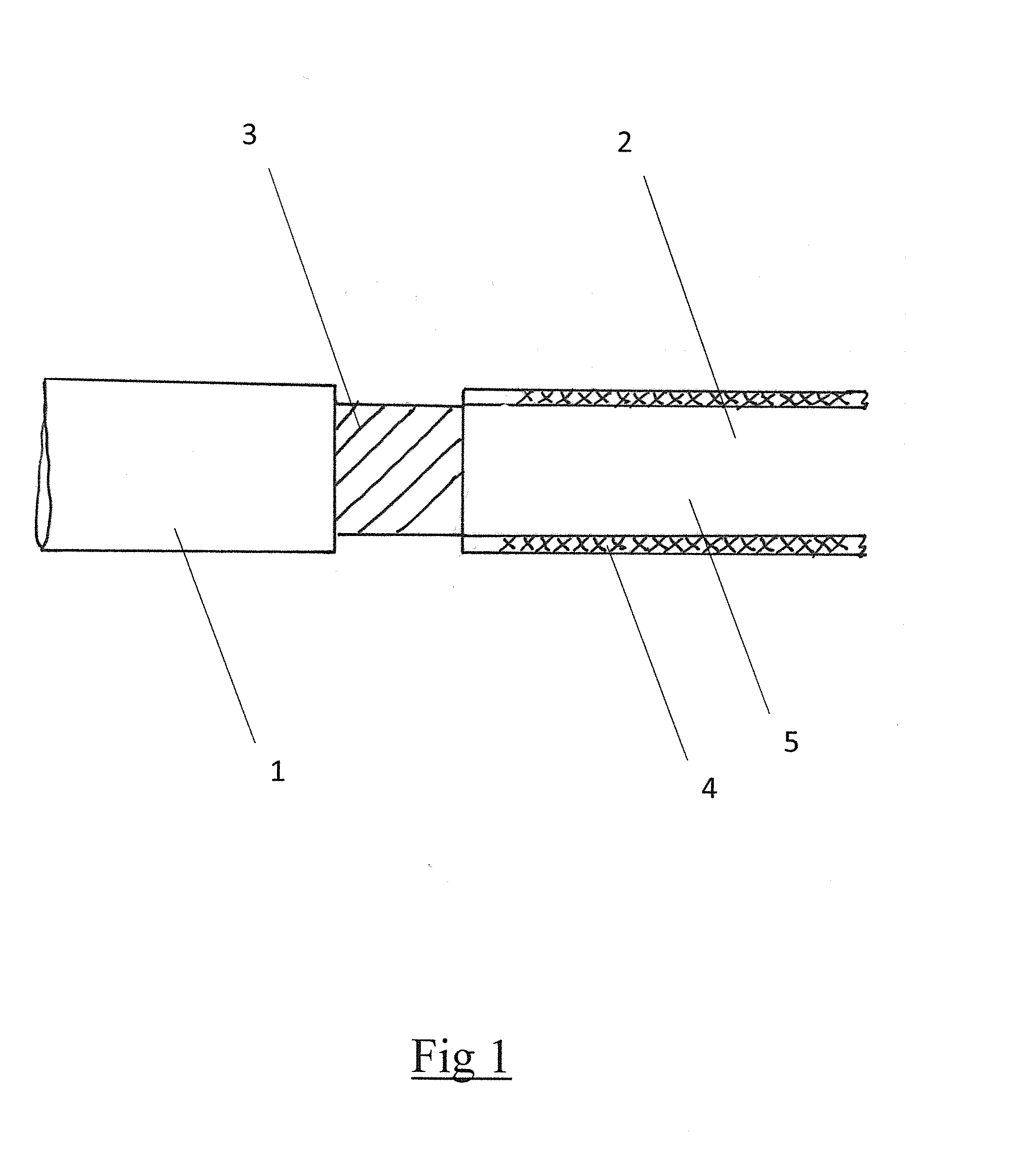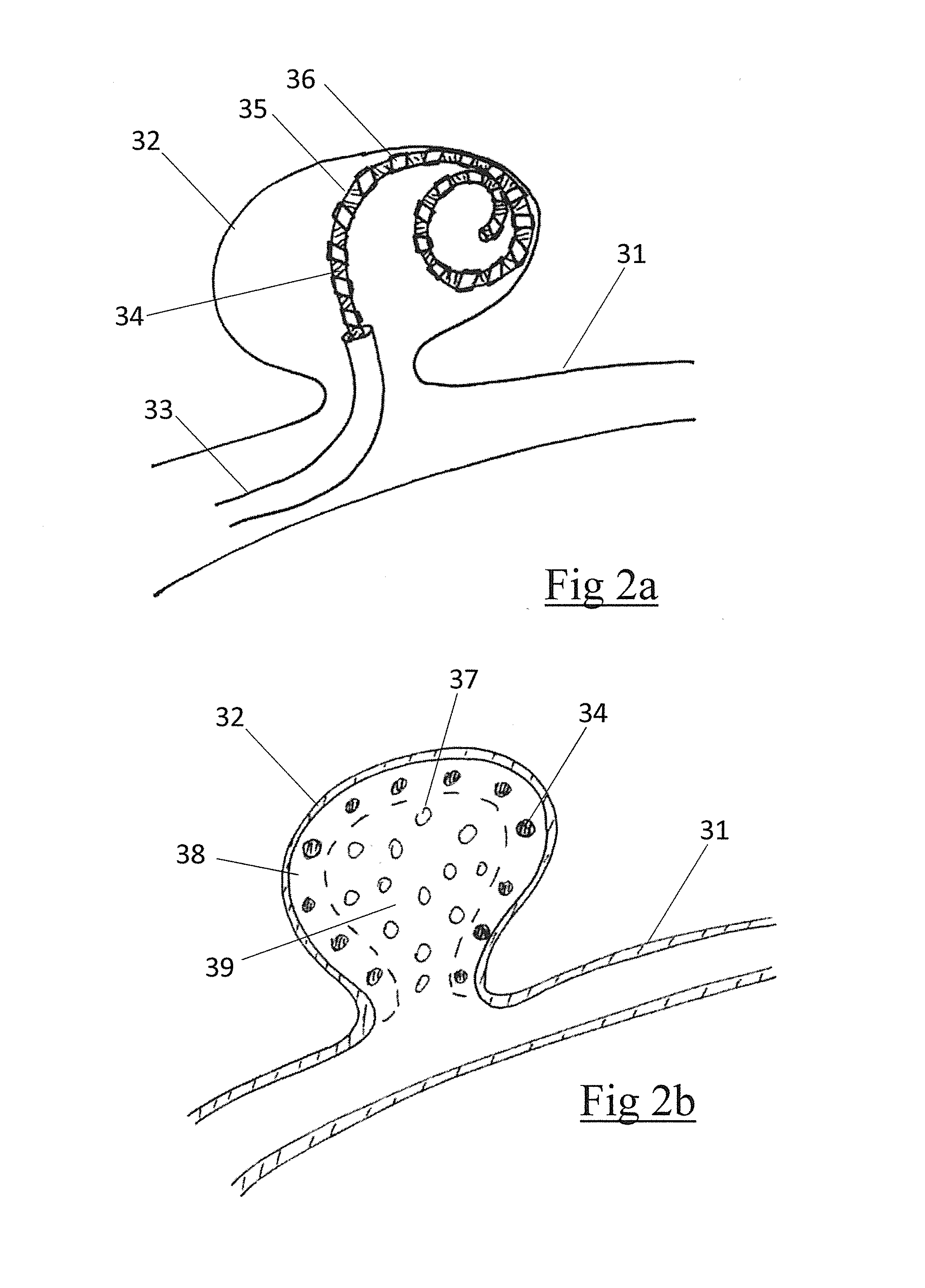DEVICE AND METHOD FOR ENDOVASCULAR TREATMENT OF ANEURYSMS USING EMBOLIC ePTFE
an endovascular and aneurysm technology, applied in the direction of dilatation, surgery, coating, etc., can solve the problems of morbidity and mortality, loss of central nervous tissue function, and rupture of treated aneurysms
- Summary
- Abstract
- Description
- Claims
- Application Information
AI Technical Summary
Benefits of technology
Problems solved by technology
Method used
Image
Examples
Embodiment Construction
[0077]An embolic occlusion device leveraging the cell in-growth properties of ePTFE is described for the treatment of aneurysms, arteriovenous malformations and other conditions where occlusion of a lumen or body cavity would be therapeutic. Expanded polytetrafluoroethylene (ePTFE) is a biocompatible material which exhibits cell ingrowth with connective tissue deposition in the interstices. Thus the material becomes anchored to the surrounding tissue. The cellular reaction is stereotypical and exhibits only low-grade inflammation. The primary reaction is one of mesenchymal cell (e.g. fibroblasts, fibrocytes, or smooth muscle cells) infiltration with collagen deposition. The well-organized cell and connective tissue deposition creates a firm scar tissue like formation. For treating aneurysms the ingrowth of cells with connective tissue deposition promotes adherence of the aneurysm wall to the embolic device thereby preventing continued growth or re-growth of the aneurysm as well as b...
PUM
| Property | Measurement | Unit |
|---|---|---|
| Pressure | aaaaa | aaaaa |
| Pressure | aaaaa | aaaaa |
| Pressure | aaaaa | aaaaa |
Abstract
Description
Claims
Application Information
 Login to View More
Login to View More - R&D
- Intellectual Property
- Life Sciences
- Materials
- Tech Scout
- Unparalleled Data Quality
- Higher Quality Content
- 60% Fewer Hallucinations
Browse by: Latest US Patents, China's latest patents, Technical Efficacy Thesaurus, Application Domain, Technology Topic, Popular Technical Reports.
© 2025 PatSnap. All rights reserved.Legal|Privacy policy|Modern Slavery Act Transparency Statement|Sitemap|About US| Contact US: help@patsnap.com



